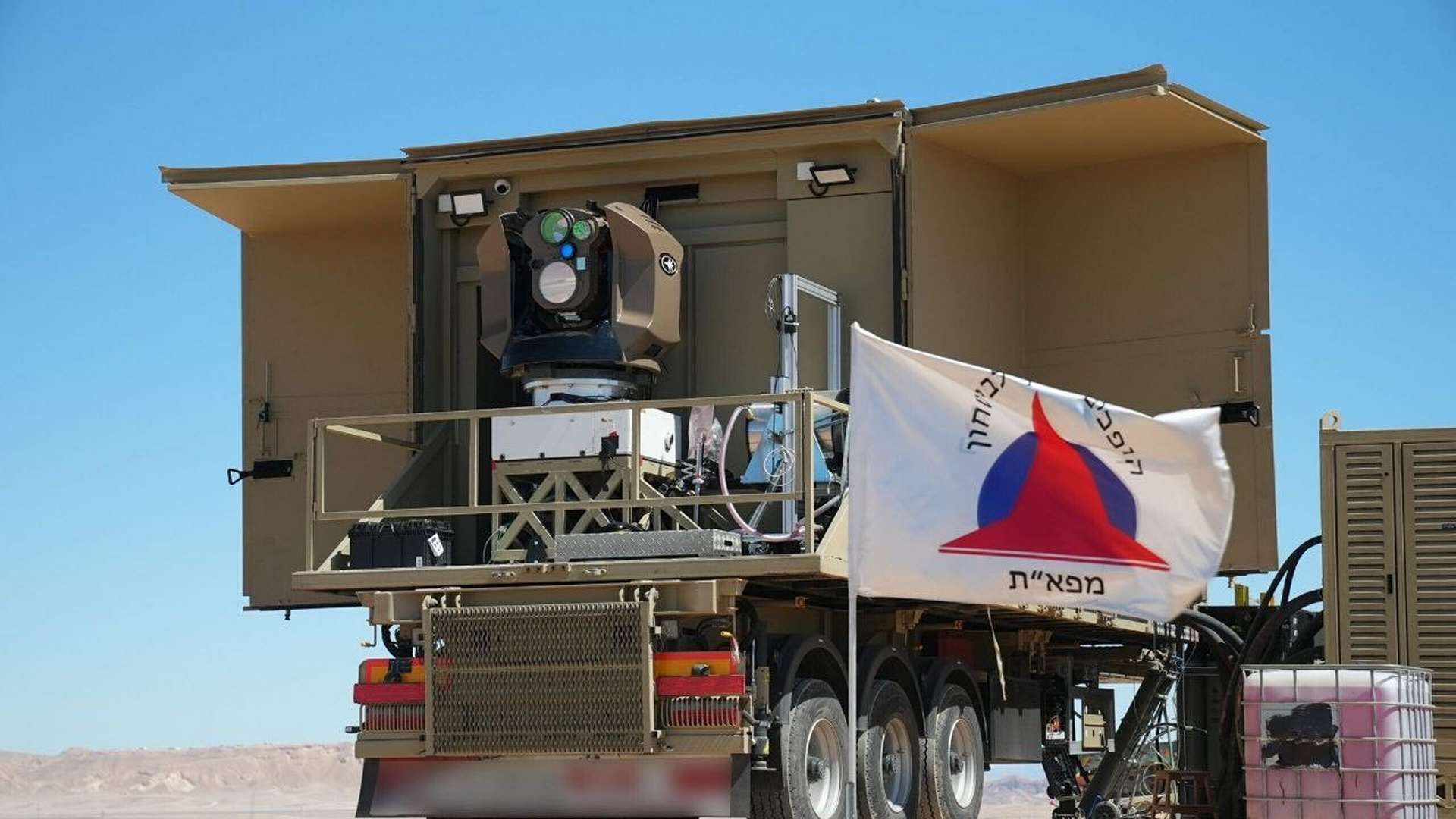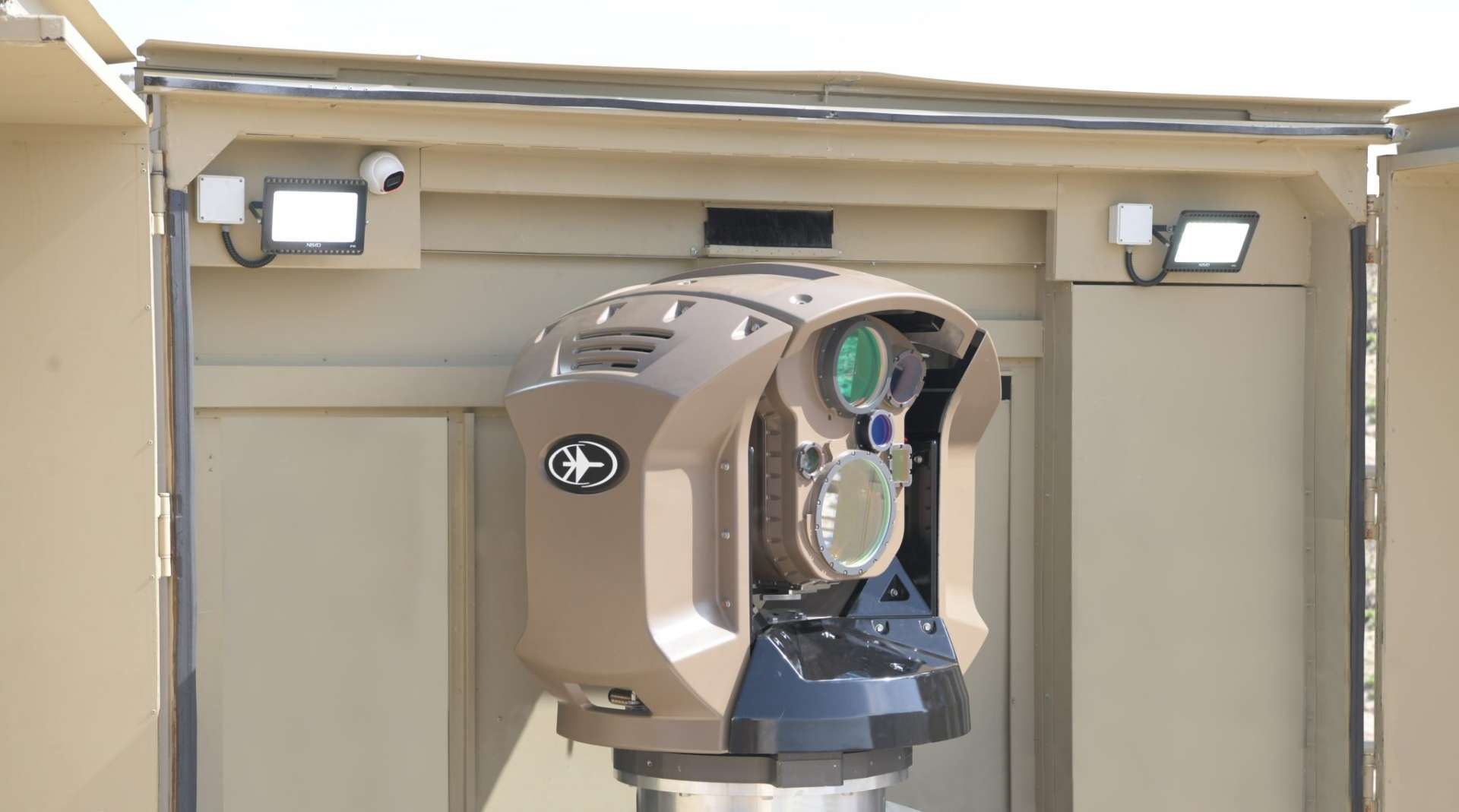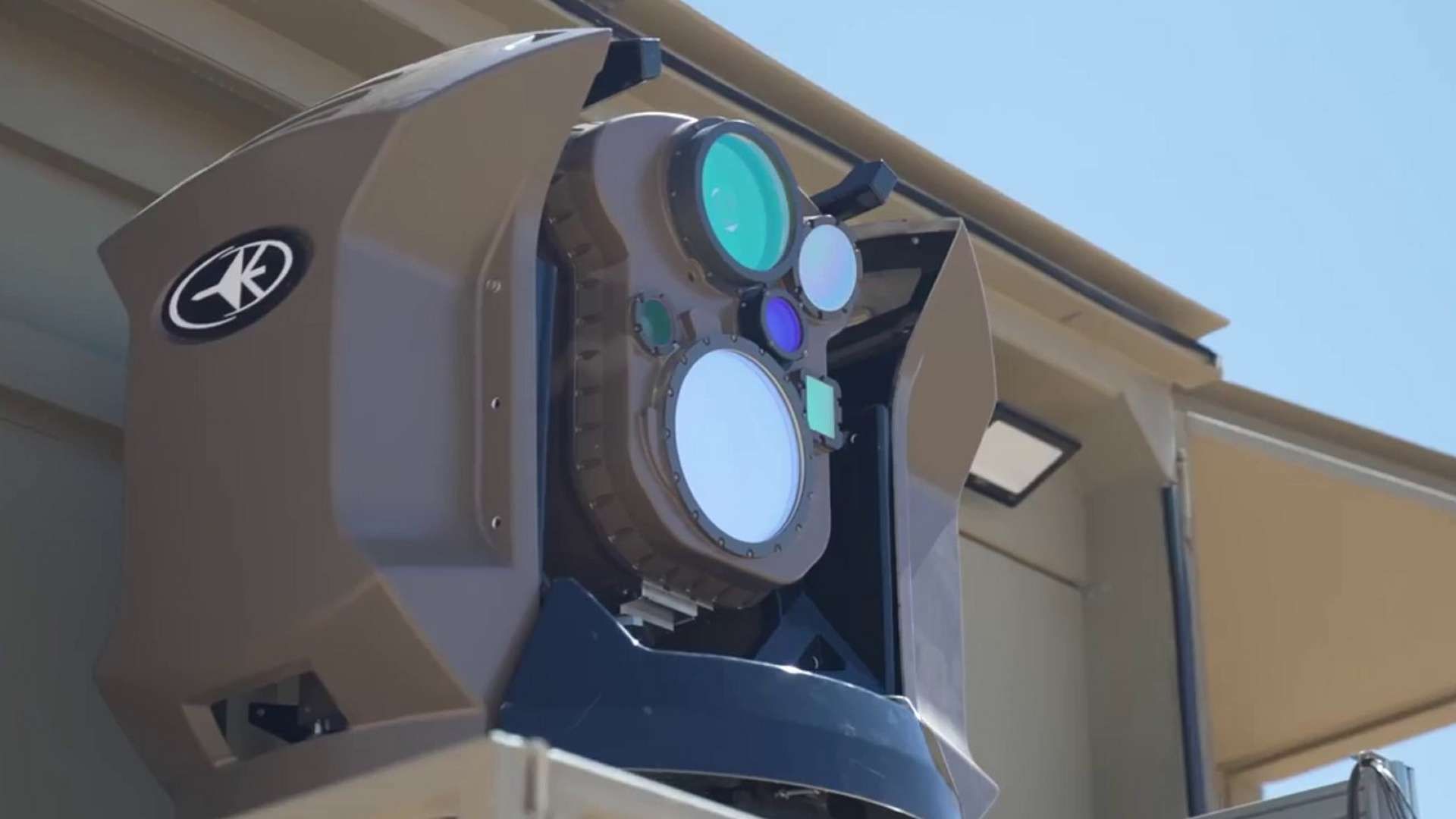Breaking News
Rafael CEO confirms deployment of Iron Beam laser weapon system by Israel in 2025.
According to The Nziv Report on September 12, 2024, Yoav Turgeman, CEO of Rafael Advanced Defense Systems, announced that its Iron Beam High Energy Laser Weapon System (HELWS) will become operational with the Israel Defense Forces (IDF) next year. This 100kW system is intended to be a new component of Israel's air defense system, serving as the "final line of defense" against drones, rockets, and mortars. It is expected to enter active service by late 2025.
Follow Army Recognition on Google News at this link

The Iron Beam laser system is expected to be fully operational by the end of 2025, with plans to integrate it into the Iron Dome to allow for coordinated use of both missile interceptors and laser systems. (Picture source: Rafael)
According to Rafael, the Iron Beam system can focus a laser beam with up to 100 kilowatts of power on an aerial target, destroying it within seconds. Its effective range varies depending on factors such as laser power, weather conditions, and the type of target, and it is capable of addressing short- and medium-range threats up to 7 kilometers away. The Iron Beam system has undergone testing, including a series of tests conducted by the IDF in March 2022 that demonstrated its ability to intercept drones, mortars, and missiles.
One of the key attributes of the Iron Beam is its lower cost per shot compared to conventional missile interceptors. Each interception using the Iron Beam is estimated to cost up to $1,000, which is lower than the $40,000 to $50,000 cost per interception associated with the Tamir missiles used by the Iron Dome system. The system also has an unlimited magazine, allowing for continuous use without the need for reloads, and does not produce debris from intercepted threats, reducing the risk of collateral damage. These features are relevant in the context of the ongoing conflict, where Israel has faced a shortage of Iron Dome ammunition. The Gaza war has reportedly cost the Israeli economy over $67.3 billion, according to Israeli economists.
Turgeman also discussed the performance of Rafael’s Python 4 and Python 5 missiles, which have been used against drones and cruise missiles during recent Iranian attacks. He noted that the Python 4 missile, in service for four decades, continues to meet operational requirements. Rafael is also developing the "Skysonic" system, which is intended to provide a hypersonic interception capability against hypersonic missile threats.

Each interception using the Iron Beam is estimated to cost up to $1,000, which is lower than the $40,000 to $50,000 cost per interception associated with the Tamir missiles used by the Iron Dome system. (Picture source: Rafael)
Rafael, which has been developing directed-energy systems for over 30 years, is working on enhancing the capabilities of the Iron Beam. In collaboration with Lockheed Martin, Rafael is developing a version of the Iron Beam that could reach power levels up to 300 kW by using multiple beams to engage several targets simultaneously. This development is primarily funded by the Israeli Ministry of Defense.
The Iron Beam, also known as "Magen Or" or "Shield of Light," is a 100kW High Energy Laser Weapon System first unveiled at the Singapore Airshow in February 2014. It is designed to intercept a variety of aerial threats using a directed-energy approach. The Iron Beam system uses a fiber laser to destroy short-range rockets, artillery, and mortar bombs, as well as unmanned aerial vehicles (UAVs). It operates by detecting and tracking airborne threats, either as a stand-alone system or as part of a broader air defense network.
Iron Beam is one component of Israel's integrated missile defense system, which also includes Arrow 2, Arrow 3, David's Sling, and Iron Dome systems. It is intended to complement these layers by providing a directed-energy option for intercepting threats that may not be effectively managed by other interceptors. A Naval Iron Beam variant is also being developed for use on ships to protect against drone swarms and anti-ship missiles. This version, which retains the same external dimensions as the ground-based system, is expected to be operational within four to five years and is planned for deployment on Israeli Navy vessels such as the Reshef-class corvette.

The Naval Iron Beam, which retains the same external dimensions as the ground-based system, is expected to be operational within four to five years and is planned for deployment on Israeli Navy vessels such as the Reshef-class corvette. (Picture source: Rafael)
Further developments have included efforts to create a mobile version of the Iron Beam system. However, weight and power supply considerations have led to a focus on integrating it with existing stationary platforms. The system's ability to achieve high precision over extended distances suggests potential applications in both military and civilian contexts, particularly in defending against slow-flying drones and other aerial threats that are more vulnerable to laser-based attacks.
In April 2022, experiments demonstrated the system's ability to intercept drones, rockets, mortar bombs, and antitank missiles. In response to operational needs, the Israeli Ministry of Defense announced plans to deploy the Iron Beam to Israel’s southern border with the Gaza Strip to test its effectiveness in real-world conditions, including during the 2023 Israel–Hamas war. The system is expected to be fully operational by the end of 2025, with plans to integrate it into the Iron Dome to allow for coordinated use of both missile interceptors and laser systems.

The system's fiber laser has the potential to reach a maximum effective range of up to 7 kilometers and is capable of neutralizing targets within seconds once the laser beam makes contact. (Picture source: Rafael)
The system's fiber laser has the potential to reach a maximum effective range of up to 7 kilometers and is capable of neutralizing targets within seconds once the laser beam makes contact. By 2023, advancements in the technology enabled the laser to achieve energy levels of 100 kW or more, with the beam's precision focused to the diameter of a coin at distances of up to 10 kilometers.
Despite its potential, the use of high-energy lasers like the Iron Beam or the British DragonFly has challenges. Atmospheric conditions such as clouds or rain can affect the beam's ability to reach its target, and the laser must remain focused on a moving target for several seconds to deliver sufficient energy to destroy it. This requirement can limit its effectiveness in countering multiple threats simultaneously, such as a barrage of rockets. Additionally, some targets could be shielded with materials resistant to laser attacks, which could reduce the system’s effectiveness.

In collaboration with Lockheed Martin, Rafael is developing a version of the Iron Beam that could reach power levels up to 300 kW by using multiple beams to engage several targets simultaneously. (Picture source: Rafael)


























